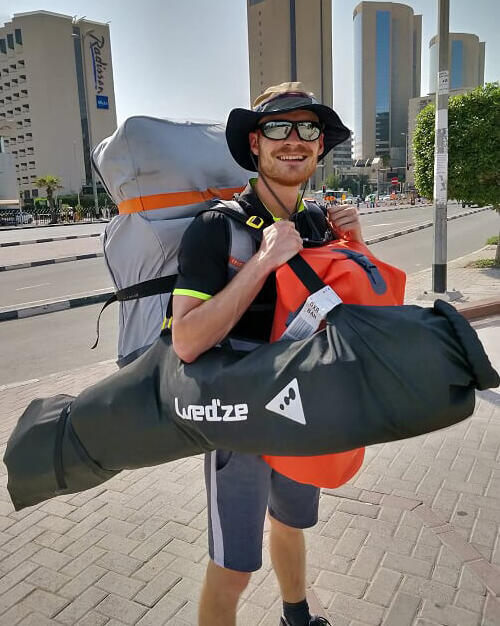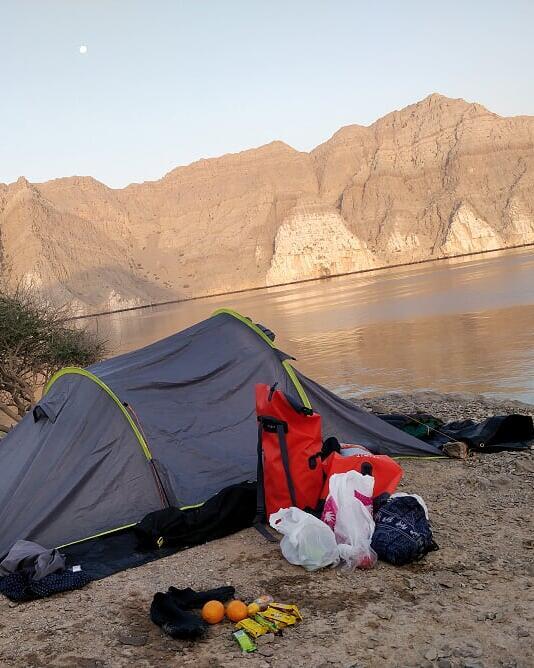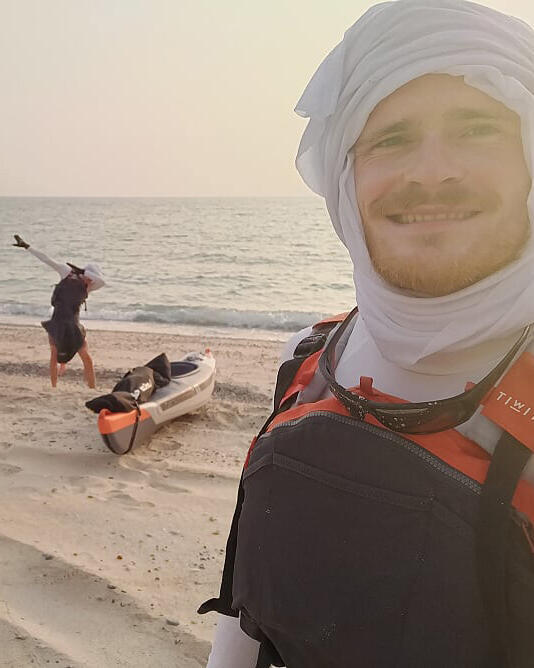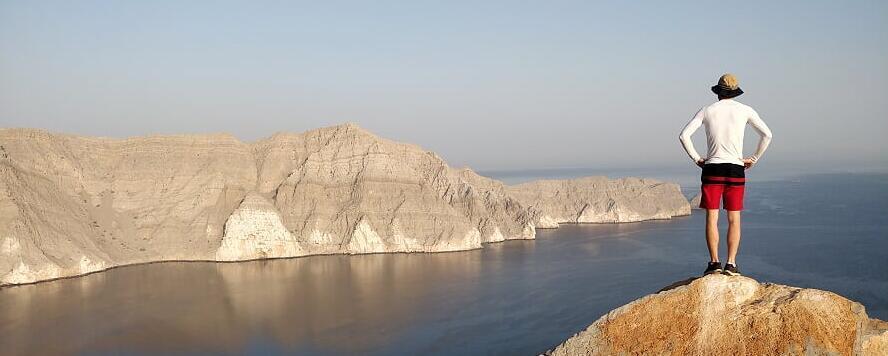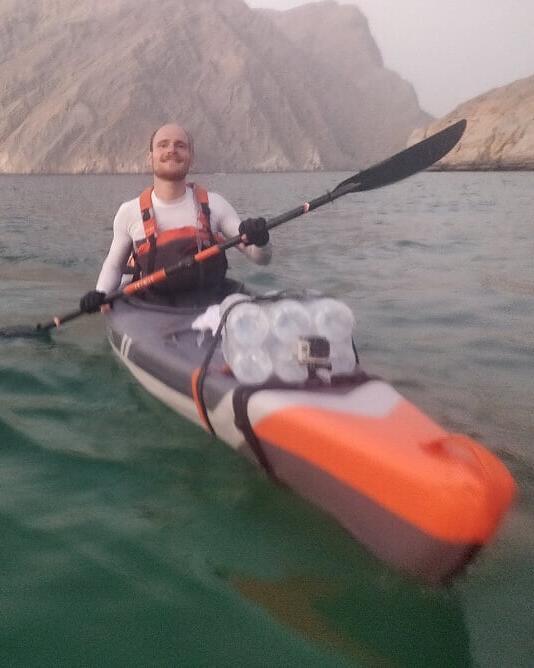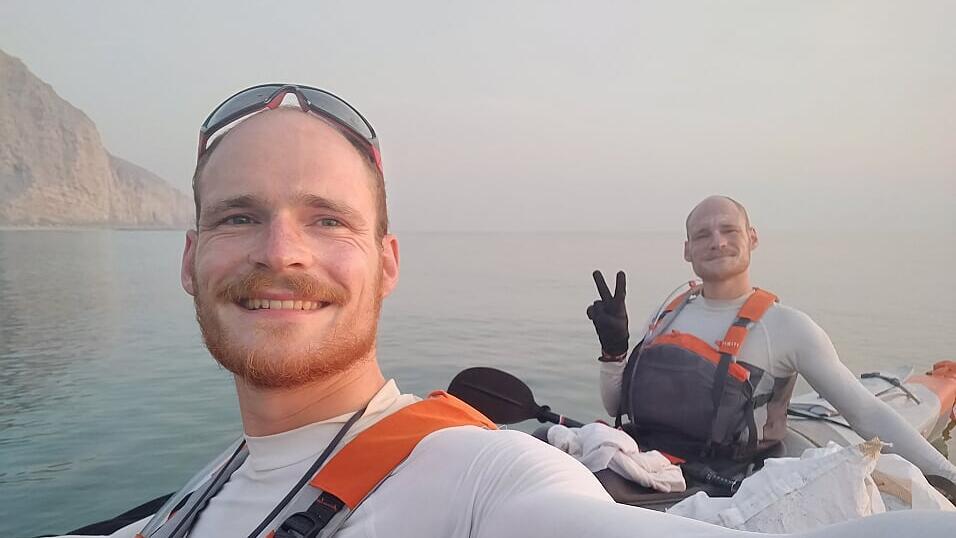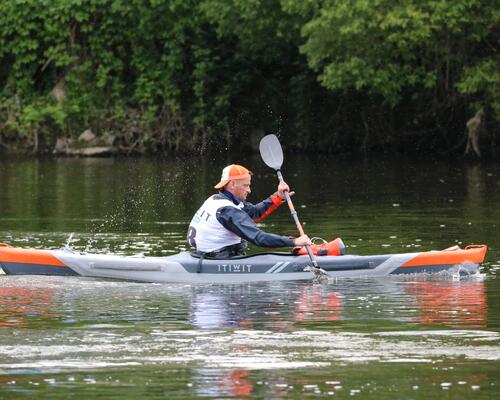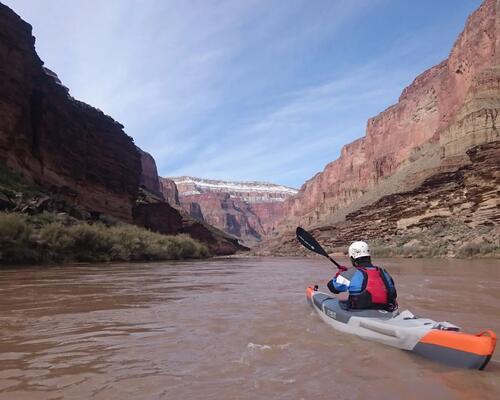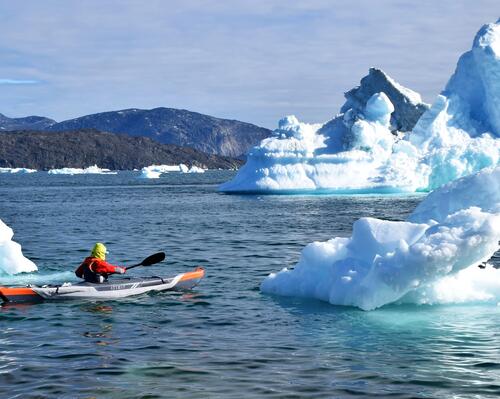#1 Preparation & getting there
This trip was more than a sporting challenge, as we'd outlined an itinerary but not specified stages so that we could tailor the journey to how things were actually going. The major difficulties would be the lack of fresh/drinking water, the constant presence of saltwater on our skin, and the intense heat that stays above 30° even at night and in the water: it was a good way to test the resistance of the kayaks through lots of carrying and under the sun. Our itinerary started with a flight to Dubai, after which we needed to get to the border between the United Arab Emirates and Oman. Once we'd crossed that, we began the kayaking leg of our journey, paddling to the entrance of the fjords and then exploring the Sham fjord, after which we made our way back to the border and to Dubai by road to finish out our trip.~

